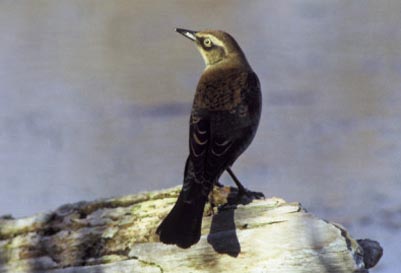Boreal Forest
|
Spruce Grouse, American three-toed Woodpecker, Black-backed Woodpecker, Olive-sided Flycatcher, Gray Jay, Boreal Chickadee, Tennessee Warbler, Cape May Warbler, Palm Warbler, Bay-breasted Warbler, Lincoln’s Sparrow, Rusty Blackbird
|
The boreal forest of spruce and fir reaches the southern limit of its range in northeastern Vermont. Vermont’s position at the edge of the boreal forest translates to relatively small populations of boreal specialists breeding within the state’s boundaries. Boreal avian specialists exhibited a general decline, with 9 of 12 species found in fewer blocks during the second Atlas.
- Four species show minimal losses.
- Spruce-budworm outbreak during first Atlas likely inflated populations of Cape May and Tennessee warblers, although Bay-breasted Warbler was stable.
- Declines in block occupancy for several species (Gray Jay, Boreal Chickadee, Olive-sided Flycatcher, Lincoln’s Sparrow and Rusty Blackbird) may reflect generally deteriorating conditions for boreal birds.
- Explanations for decreases in block occupancy remain hypothetical but climate change poses an especially significant risk to boreal forest in Vermont, where conditions are marginal.







